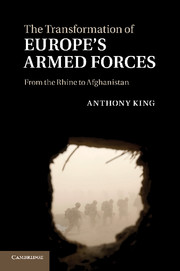6 - Operational art
Published online by Cambridge University Press: 04 February 2011
Summary
ISAF IX
Rapid reaction corps headquarters constitute an important part of the new ‘milieu of operational innovation’. However, in order to demonstrate how this milieu operates and how these headquarters are in fact innovating, it is necessary to examine them in action. It is not easy to do this comprehensively. The headquarters are geographically dispersed, conducting exercises and operations at different times and places, to which it is not always easy to gain access, especially as a foreign national. Borders have become porous in Europe but they still operate and, especially in the military sphere, issues of state sovereignty can be sensitive. Consequently, in order to provide a detailed picture of operational art in practice, it has been necessary to focus on one rapid reaction corps in action: the ARRC.
In 2006, ARRC took over command of the International Security Assistance Force (ISAF) Headquarters in Kabul. ISAF was originally established in 2002 primarily on peace support missions in the north and east of the country, eventually becoming a NATO command in 2003. As part of NATO's strategic plan, the south and east of the country, originally under United States' command as part of their Operation Enduring Freedom, came under unified ISAF control between July and October 2006. ARRC was tasked to form the core of the new ISAF headquarters and to administer the transition to full NATO responsibility for Afghanistan.
- Type
- Chapter
- Information
- The Transformation of Europe's Armed ForcesFrom the Rhine to Afghanistan, pp. 126 - 146Publisher: Cambridge University PressPrint publication year: 2011

